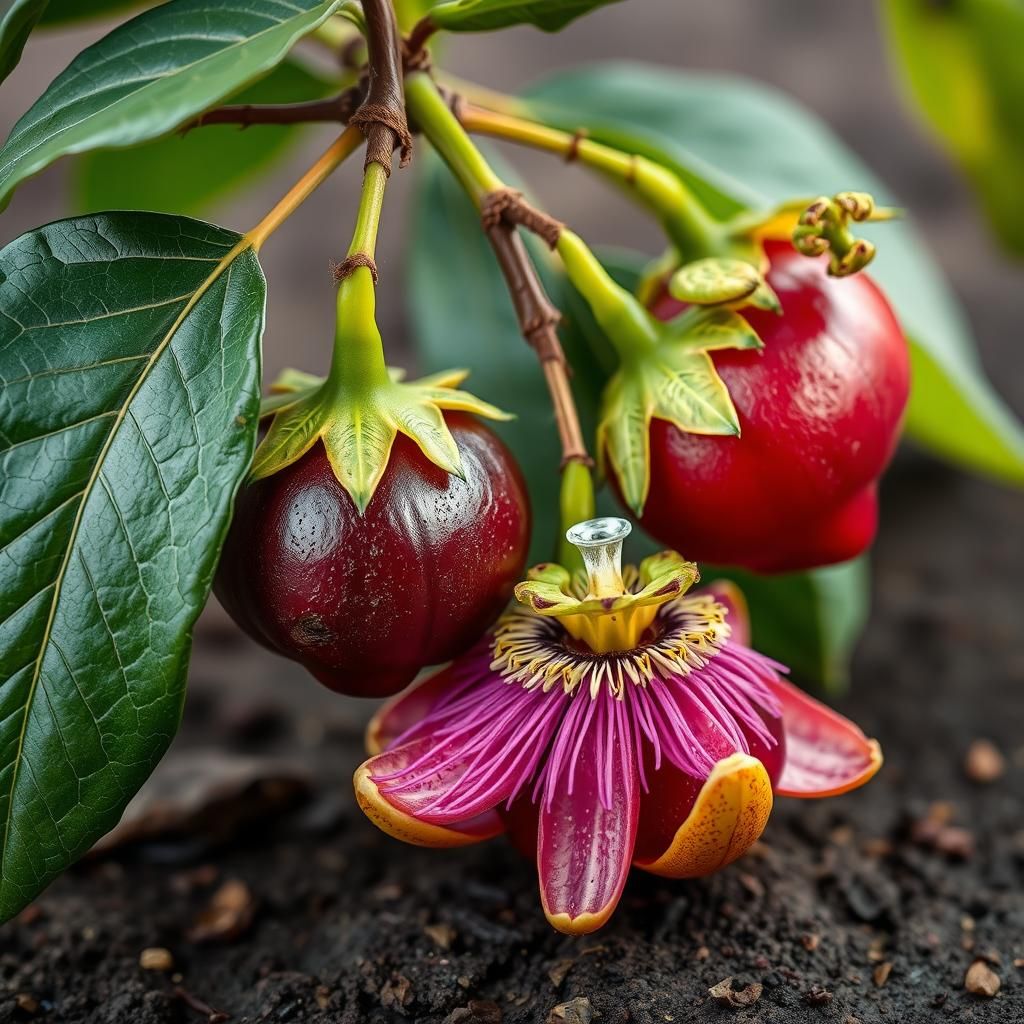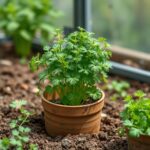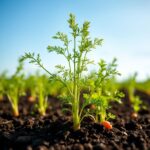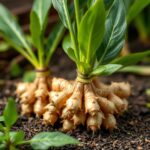Understanding the Stages of Passion Fruit Growth: A Comprehensive Guide

Passion fruit, known for its vibrant flavor and nutritional benefits, has captured the attention of both home gardeners and commercial growers. Understanding the stages of passion fruit growth is essential for cultivating healthy plants and maximizing fruit production. This comprehensive guide will take you through each phase of growth, from seed germination to harvesting ripe fruit. By exploring the environmental factors, care requirements, and potential challenges at each stage, you’ll be equipped with the knowledge needed to ensure a successful passion fruit harvest. Whether you’re a novice or an experienced gardener, this guide will enhance your journey into the world of passion fruit cultivation.
Stages of Passion Fruit Growth
The cultivation of passion fruit goes through several distinct stages, each essential for achieving optimal fruit production. Initially, seeds are planted, often in a controlled environment where they can germinate and develop into seedlings. As they grow, the seedlings are transplanted into larger spaces, allowing them to mature. This is followed by the vegetative stage, where the plants develop robust stems and foliage, crucial for supporting the fruit later on. Once the plant reaches a certain maturity, the flowering phase begins, leading to fruit set and eventual harvest. Proper understanding of each stage is vital for successful cultivation.
Seed Germination
The seed germination stage is the starting point of passion fruit cultivation. Seeds are typically soaked in water for 24 hours to enhance germination rates, later sown in a seedbed or containers filled with a well-draining soil mix. Under ideal conditions of warmth and moisture, usually within 1 to 2 weeks, the seeds begin to sprout. This stage is crucial because healthy seedlings will lead to a more robust plant, setting the foundation for future growth.
Seedling Development
Once the seeds have germinated, they enter the seedling development phase. During this time, the young plants are carefully monitored for moisture and light conditions. Seedlings generally require partial shade and consistent watering to avoid stress. This stage lasts about 4 to 6 weeks until the plants have developed sufficient roots and leaves. Proper care during this phase is critical, as it influences the overall health and vigor of the plant as it transitions to the next stage of growth.
Vegetative Stage
In the vegetative stage, passion fruit plants focus on developing strong stems and abundant foliage. This period, which can last several months, is characterized by rapid growth as the plants take advantage of nutrients and sunlight. It's essential to provide adequate support, as passion fruit vines are climbers. Regular pruning and training of the plants will ensure better airflow and light penetration, which are vital for the health of the plant and future fruit production.
See also:
Flowering Stage
Following vegetative growth, the plants enter the flowering stage. Typically occurring in warmer weather, this phase is marked by the emergence of striking flowers. Each flower has the potential to develop into a fruit, and it is during this stage that pollination occurs, often facilitated by bees and other insects. Maintaining a healthy ecosystem around the plants can enhance pollination rates, ensuring better yields. The duration of the flowering stage varies, but successful pollination is crucial for the subsequent fruit development.
Fruit Development and Harvesting
The final stage, fruit development, begins once flowers have been successfully pollinated. During this period, fruits grow rapidly and can take several weeks to mature, typically changing color as they ripen. It's vital to monitor moisture levels and ensure proper nutrient supply during this time to avoid issues such as blossom drop. Harvesting usually occurs when the fruits reach full size and exhibit their characteristic color, marking the completion of the growth cycle and the beginning of their journey to the market.
| Growth Stage | Duration | Key Activities |
|---|---|---|
| Seed Germination | 1-2 weeks | Soaking seeds, planting in seedbeds |
| Seedling Development | 4-6 weeks | Watering, monitoring light and moisture |
| Vegetative Stage | Several months | Providing support, pruning, and training |
| Flowering Stage | Varies | Encouraging pollination, maintaining ecosystem |
| Fruit Development | Several weeks | Monitoring growth, preparing for harvesting |
Key Factors Influencing Passion Fruit Growth
Understanding the key factors that influence the growth stages of passion fruit is crucial for optimizing its cultivation. These factors include climate, soil quality, water availability, and nutrient management. Each of these components plays a vital role in the health and productivity of the plant. For instance, passion fruit thrives in warm climates with adequate sunlight and well-drained soils. Regular monitoring of soil nutrients and pH levels, along with proper irrigation strategies, can significantly enhance the growth and yield of the crop.
Climate Requirements for Optimal Growth
The climate in which passion fruit is grown significantly affects its growth stages. This tropical fruit requires warm temperatures between 20-30°C (68-86°F) to flourish. Additionally, protection from frost is essential as it can damage the plant. Passion fruits also require adequate rainfall or irrigation, typically around 1,200 to 1,500 mm annually, to support fruit development during the critical growth phases.
Soil Conditions for Passion Fruit Cultivation
Soil plays a pivotal role in the growth of passion fruit, and it should be well-drained and rich in organic matter. A loamy soil type with a pH level between 6.0 and 7.0 is ideal for passion fruit cultivation. Conducting a soil test prior to planting can help identify nutrient deficiencies, enabling growers to amend the soil accordingly to ensure optimal health and growth of the plant.
See also:
Irrigation Practices for Healthy Growth
Effective irrigation practices are vital for the development of passion fruit, especially during dry periods. The plants require consistent moisture without waterlogging, which can cause root rot. A drip irrigation system is often recommended to provide a steady supply of water directly to the root zone. Regularly checking soil moisture levels can help determine when to irrigate, ensuring that the plants receive the right amount of water throughout their growth stages.
Nutrient Requirements Throughout Growth Stages
Passion fruit has specific nutrient requirements that vary throughout its growth stages. Essential macronutrients like nitrogen, phosphorus, and potassium must be applied in balanced ratios according to the growth phase. For instance, high nitrogen is crucial during the vegetative stage, while more phosphorus is needed during flowering and fruiting. Regular application of organic fertilizers can contribute to the overall health and productivity of the plants.
Pest and Disease Management in Passion Fruit Growth
Effective pest and disease management is essential for sustaining the health of passion fruit plants throughout their growth stages. Common pests include aphids, whiteflies, and caterpillars, which can damage leaves and fruits. Implementing integrated pest management strategies, such as using beneficial insects and natural repellents, can help control these threats. It's also important to monitor the plants for signs of diseases such as bacterial wilt and fungal infections, employing preventative measures to protect the crop.
Questions from Our Readers
What are the main stages of passion fruit growth?
The main stages of passion fruit growth include germination, seedling development, vegetative growth, flowering, and fruiting. During germination, seeds absorb water and begin to sprout. In the seedling development stage, young plants establish their root systems. As plants enter vegetative growth, they produce leaves and stems. Flowering occurs when the plant develops flowers that eventually lead to fruit. Finally, during the fruiting stage, the flowers mature into the edible passion fruit.
How long does it take for passion fruit to grow?
The time it takes for passion fruit to grow varies depending on the conditions, but generally, it takes about 12 to 18 months from planting seeds to harvesting ripe fruit. Conditions such as temperature, humidity, and soil quality play a vital role in determining the growth period. Proper care and maintenance can help ensure a healthy plant and potentially a quicker harvest.
See also:
What conditions are best for passion fruit growth?
Passion fruit thrives in warm temperatures ranging from 20°C to 30°C (68°F to 86°F) and requires well-draining, nutrient-rich soil. Additionally, it needs access to full sunlight, ideally receiving at least 6 hours of direct light per day. Providing adequate water without waterlogging the roots is also crucial for promoting healthy growth and abundant fruit production.
How can I support the growth of my passion fruit plant?
To support the growth of your passion fruit plant, use a trellis or structure for it to climb on, as these vines require support for optimum growth. Regular watering, especially during dry periods, and applying a balanced fertilizer can help enhance its growth. It's also important to prune the plant periodically to encourage better air circulation and light penetration, which can lead to healthier plants and more fruitful yields.

If you want to read more articles like Understanding the Stages of Passion Fruit Growth: A Comprehensive Guide, we recommend you check out our Seeds category.
Leave a Reply
Related Articles